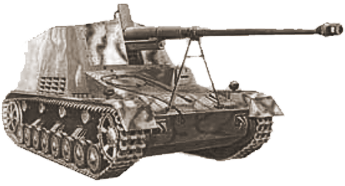Operation Overlord's Risks
On June 6, 1944 Anglo-American led armies successfully carried out the greatest amphibious invasion in history. Today, the Allied invasion of Nazi-occupied France is widely remembered as part of an inevitable march to victory over Hitler's armies; primarily because of the overwhelming numerical superiority the Allies enjoyed over the Wehrmacht. Often forgotten in the decades that have since passed is that on that fateful June morning so many years ago the Allied armies faced some of the longest odds in history.
Operation Overlord, the Allied code name for the invasion, had been years in development by June of 1944. Such an extended gestational period had been for a very good reason; historically amphibious invasions of the scale the Allies had planned for securing a beachhead in France had proven anything but a sure thing. No other military operation is as fraught with hazard as an amphibious invasion. The defender holds tremendous advantages over an attacker forced to transport literally everything needed to not only defeat the enemy but also supply the invading armies. Many nations and empires throughout history had their fortunes crushed or nearly crushed from failed maritime operations. Examples abound regarding the disastrous consequences from failed seaborne operations and invasions.
For instance, the Great Mongol Empire reached its eastern limits when its attempts to invade Japan ended in spectacular failure primarily because of bad weather. Spain saw her empire hamstrung by the Spanish Armada's destruction. Napoleon witnessed his empire cut short by not only his failed invasion of Russia, but also his numerous failed attempts to cross the English Channel. During the First World War, British and British Commonwealth armies suffered a body blow overcome with only great difficulty after the failed attempts to break out from the beachhead established by the amphibious landings at Gallipoli in 1915.
During World War II further examples abound in regards to not only the inherent difficulty of successfully carrying out amphibious landings, even when the invading armies enjoy overwhelming air and naval dominance, but also the difficulties confronting the equally complex airborne operations the Allies were counting on to pave the way for their ship based assault armies. For example, any enthusiasm Germany may have possessed for complex air and seaborne operations ended in the Pyrrhic spring 1941 victory represented by the conquest of Crete. The enormous cost incurred in taking Crete played a profound role in Germany's lack of enthusiasm for attempting to take Malta; a failure of will that played a central role in crushing the Axis hold on the Mediterranean. For their part, the German army, reeling before Moscow early in 1942, still managed to decimate the Red Army's airborne brigades following failed Soviet Para drops behind German lines.
For all the success the American's had enjoyed against Japan in the Pacific it is often forgotten how perilously close to failure America's first two large scale amphibious assaults has been. An American amphibious invasion at Guadalcanal, in the Solomon Islands, hung in peril until late in 1942 - at one point the Japanese Navy had driven off the American Navy and isolated thousands of US Marines and soldiers on the beaches. In 1943, the American invasion of Tarawa had resulted in victory only after the invading American divisions had endured losses so horrific as to completely shock the American public. Even Allied amphibious efforts in the ETO had proven a decidedly mixed bag. In 1942 the Dieppe raid was a complete disaster. Dangerous German counterattacks against allied beachheads in Sicily and at Salerno, coupled with the near allied failure in January 1944 at Anzio, provided the Overlord planners even more recent and vivid examples regarding the vulnerability and fragility inherent in armies hammered into a small beachhead, and tenuously supplied from the sea; even with near absolute naval and air supremacy.
In short, as Allied Supreme Commander Dwight D. Eisenhower led the planning for Overlord he had to consider a tremendous body of negative precedent littering the historical landscape. Moreover, none of the previously mentioned World War II era amphibious invasions had faced the same defensive firepower as awaited Eisenhower's men. In France the Germans had massed some 58 divisions. Although far too many of these divisions were second rate training and garrison divisions the German armies in France could rely upon ten well equipped panzer and panzer grenadier divisions and seventeen field ready infantry divisions; a fighting force that represented a potent representative sample of the most formidable and foremost war machine built in the previous hundred plus years. Finally, even if the Allies won a beachhead in Normandy the Germans possessed enormous defensive advantages. Overall, as we look back sixty-five years this month it is worth remembering not only the great Allied victory on June 6, 1944 but also the considerable risk of failure these brave men had faced.
by Steven Douglas Mercatante



Post new comment